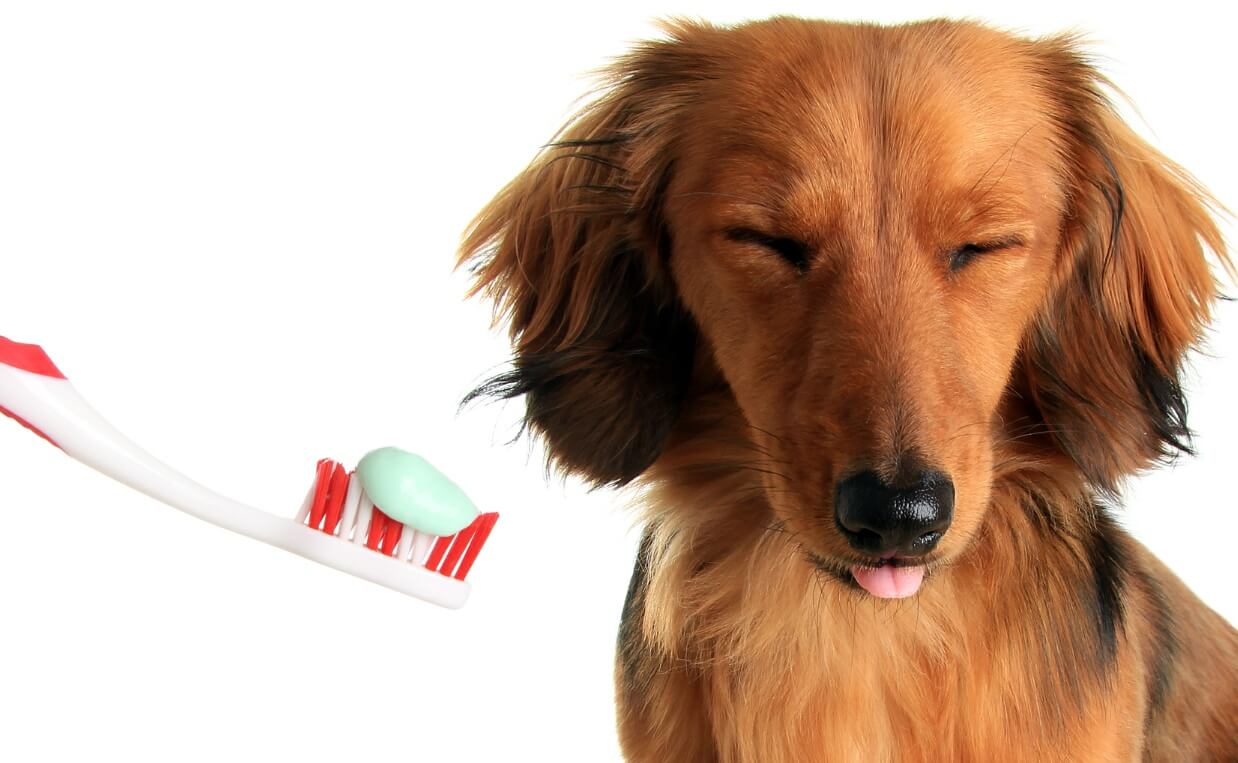
Good oral hygiene plays an important role in canine health. Over two-thirds of dogs over the age of three years old suffer from periodontal disease, an inflammation or infection of the tissues surrounding the teeth. Periodontal disease starts as gingivitis caused by plaque and often progresses to involve the bony tooth sockets. Left untreated, periodontal disease can lead to painful tooth loss.
Read more: Does Your Dog Have Hidden Dental Disease?
February is National Pet Dental Health Month, a fitting time to discuss how often you should brush your dog’s teeth.
Why Is It Important to Brush Your Dog’s Teeth?
Before jumping into how often you should brush your dog’s teeth, let’s discuss why brushing your dog’s teeth is important in the first place.
Dental care is tremendously important to your dog’s overall health. Oral bacteria can cause serious internal medical problems as well as very painful periodontal and bone health problems. Unfortunately, poor dental care through your dog’s life can lead to a shortened life cycle, and we all want to spend as much time with our dog as possible.
Clearly, making oral hygiene a priority is a must if you want your dog to live a long, healthy life.
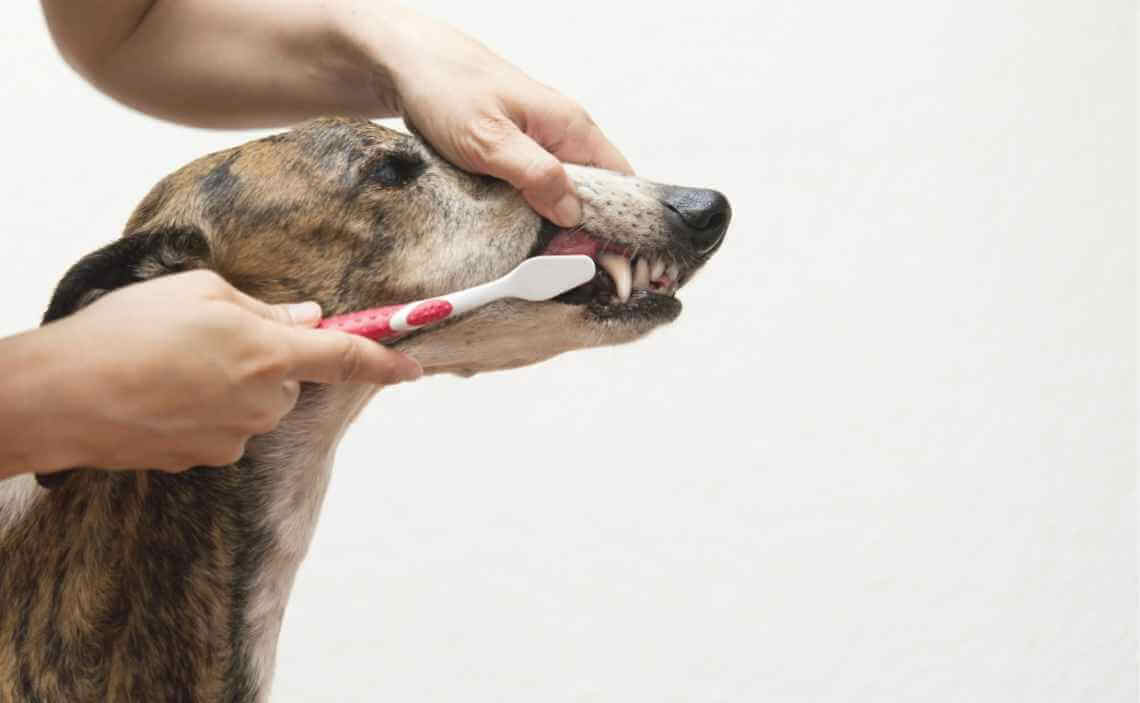
How Often Should You Brush Your Dog’s Teeth?
When it comes to brushing your dog’s teeth, the more you can brush, the better. Some veterinarians recommend brushing your dog’s teeth twice a day, just like humans. But for many dog parents, finding the time to brush your dog’s teeth twice – or even once – a day isn’t realistic.
If you don’t have time to brush your dog’s daily, most veterinary dental experts recommend brushing your dog’s teeth at least 3 times per week. This will drastically help to prevent any serious dental diseases in your dog.
Additionally, you should have your dog’s teeth professionally cleaned once per year at a veterinary clinic. Discuss this treatment with your veterinarian. He or she can talk you through the procedure and give you an estimate on how much your dog’s dental cleaning will cost.
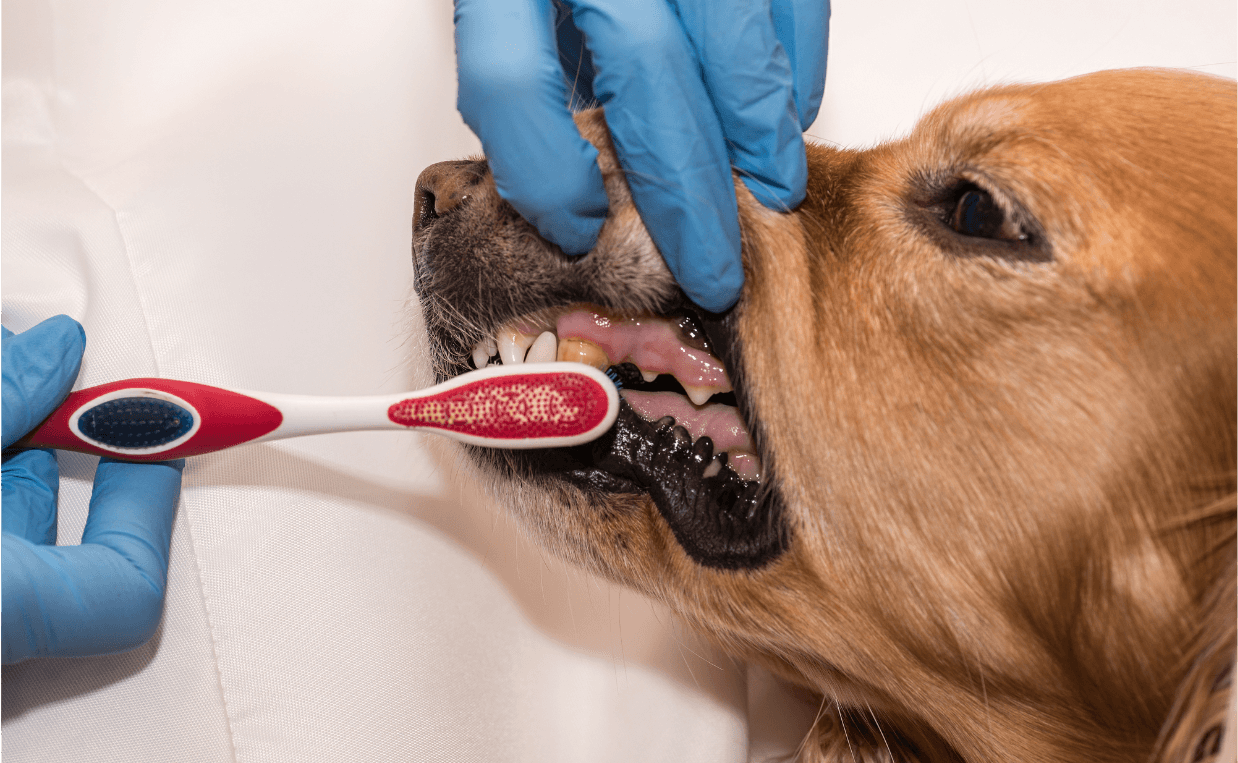
How to Brush a Dog’s Teeth
Brushing your dog’s teeth isn’t difficult once you get your dog used to the idea. It’s similar to brushing your own teeth. In general,
- Be sure to use a toothbrush and toothpaste specially-designed for dogs. Do NOT use human toothpaste. Human toothpaste contains ingredients your dog should not swallow. Some human toothpastes contain ingredients which may make your dog sick, while others may contain xylitol which is toxic for dogs.
- Wear gloves when brushing your dog’s teeth. A dog’s mouth contains lots of bacteria so it is best to protect yourself. If you can’t manage brushing your dog’s teeth with gloves on, make sure to wash your hand with soap and water thoroughly when you are finished.
- Start brushing one or two teeth at a time. Focus on the front side of the back teeth and canine teeth as these are the priority.
- At first, focus on the outside of your dog’s teeth. Dogs have a rough tongue. It helps to scrape off the interior of their teeth, so the outside of your dog’s teeth is the priority for brushing until your dog gets used to having his or her teeth brushed.
- Apply slight pressure and brush in a circular motion. Don’t apply too much pressure so you don’t scratch your dog’s tooth enamel.
- Canine toothpaste doesn’t have to rinsed out of your dog’s mouth like human toothpaste.
Read more: 5 Easy Steps to Brush Your Dog’s Teeth
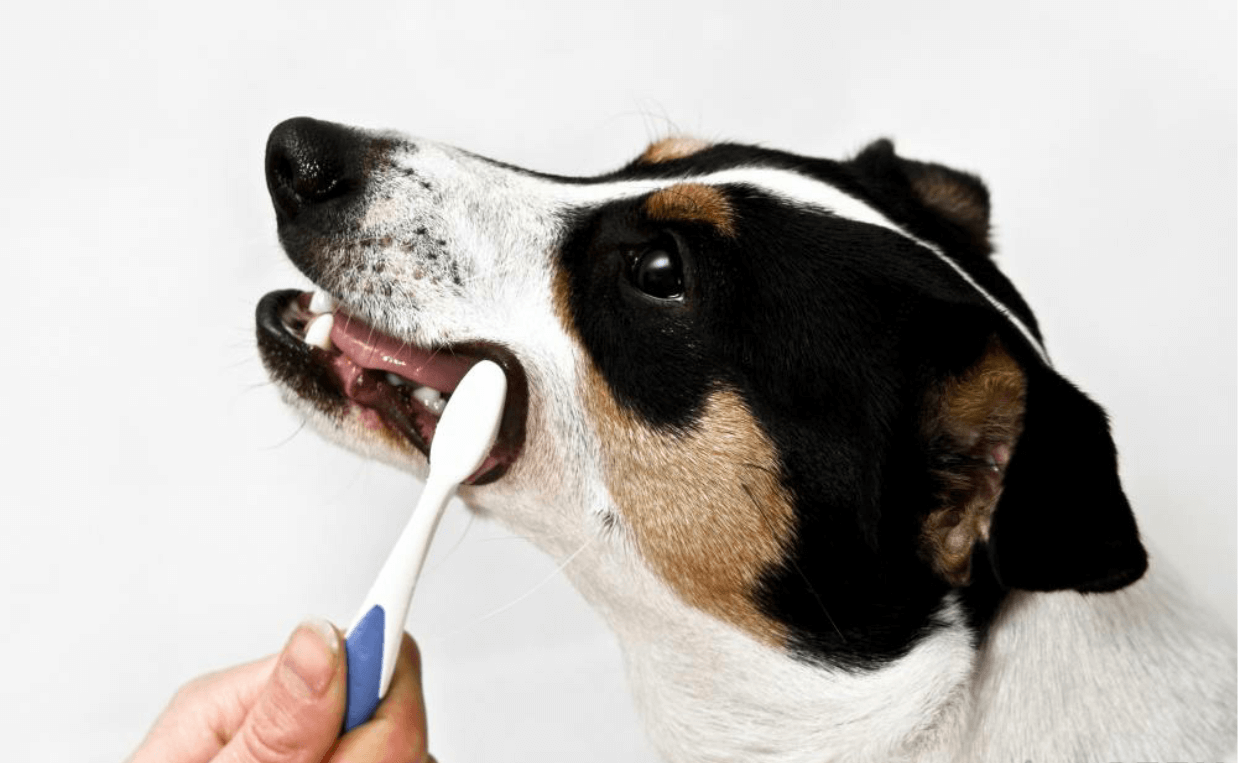
In Addition to Brushing Your Dog’s Teeth
While no other activity should replace brushing your dog’s teeth with a canine toothbrush and toothpaste, there are a few things you can do to supplement brushing your dog’s teeth.
-
Canine dental chews
Most dog parents give their dog a treat once in a while. Consider choosing dental treats to scrape your dog’s teeth and help prevent plaque and tartar. Click here to view dental chews on Amazon.
-
Canine dental water additives
There are water additives you can add to your dog’s water. Dog water additives are non-toxic and can be swallowed by the dog. When your dog drinks his or her water, the additives will help kill bacteria in your dog’s mouth and keep his or her teeth cleaner. Click here to view canine dental water additives on Amazon.
-
Canine dental gels
Similar to canine toothpaste, dog dental gels need to be spread over your dog’s teeth. They are easy to use as you just spread them over your dog’s teeth once and leave, and there’s no brushing needed. The gel works on its own. Click here to view canine dental gels.
Why It’s Imperative to Start Brushing Your Puppy’s Teeth Early
While it’s never too late to start brushing your dog’s teeth, it’s helpful to being as soon as possible. The sooner you start brushing your pup’s teeth, the easier it will be to get him or her used to it. Puppies are far more accepting of new things. The best practice is to brush your puppy’s teeth every day at the same time as part of your daily routine. You can start by running your puppy’s gums with your finger. Ease into it by massaging his or her gums regularly while you’re snuggling together.
Read more: Why It’s Crucial You Start Grooming Your Puppy Early and Regularly
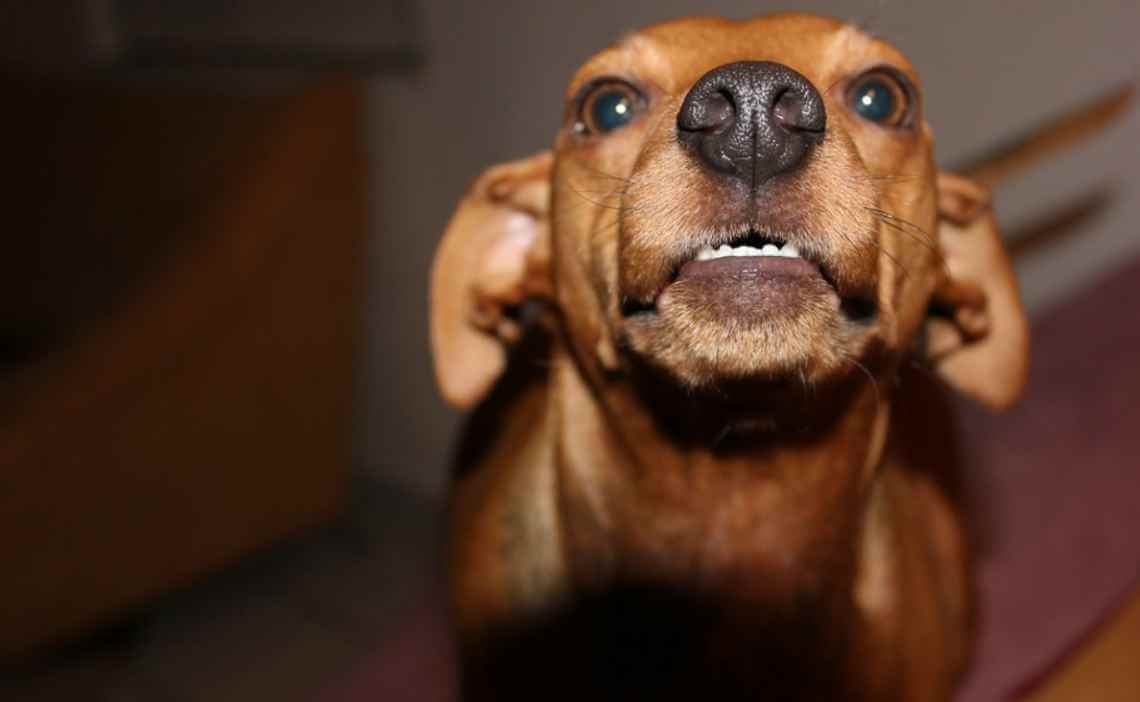
What to Watch For When Brushing Your Dog’s Teeth
Toothbrushing time is a good opportunity to look for signs of tooth pain, mouth injuries or other issues. If you notice something abnormal in your dog’s mouth, or your dog winces in pain if you touch a specific area, you need to get your dog evaluated by his or her veterinarian. Even teeth that look OK on the outside can be abscessed, so x-rays are the only way to determine your dog’s dental health.
A few signs your dog needs to be seen by a vet include:
- Excessive red gums
- Bleeding gums
- Excessive drooling
- Difficulty or pain when chewing
- Damaged or chipped teeth
- Worse than usual breath (which may indicate a dental abscess or tooth root problem)
Do your best to make brushing your dog’s teeth an enjoyable experience, but if you have any questions about your dog’s dental health or how to brush your dog’s teeth, be sure to talk to your veterinarian. Remember the better care you take of your dog’s teeth at home, the healthier he or she will be.
Do you brush your dog’s teeth regularly? What canine toothbrushing tips do you have to share with the Canine Campus community? Please comment below…

 9 Reasons to Take Your Dog to the Groomer Regularly
9 Reasons to Take Your Dog to the Groomer Regularly How to Groom Your Dog in 8 Easy Steps
How to Groom Your Dog in 8 Easy Steps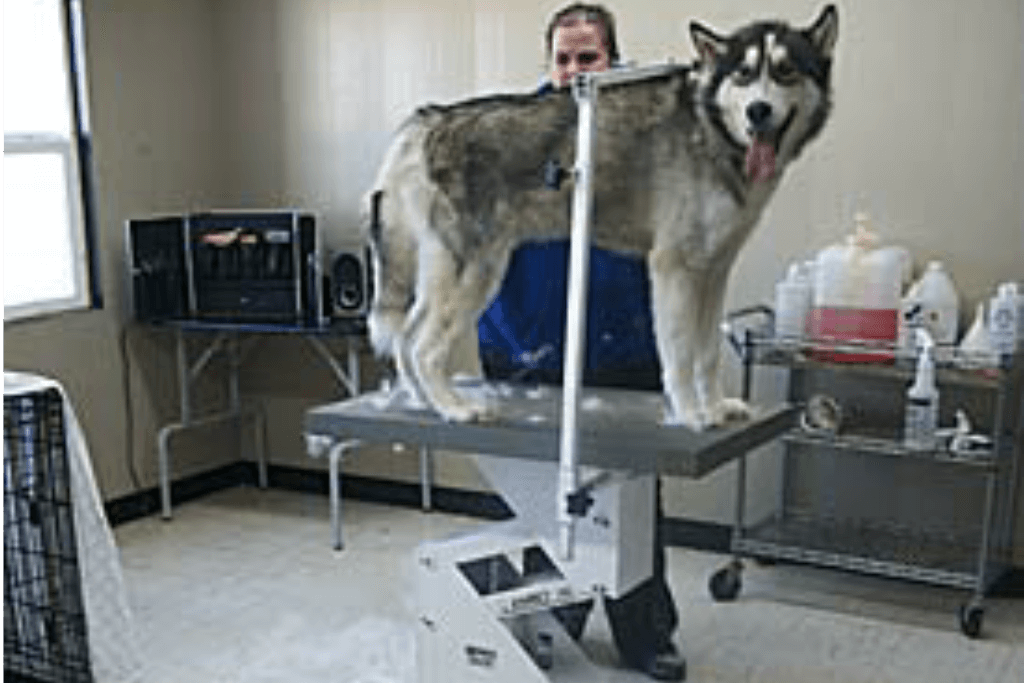 Get Ready for a BLOW-OUT This Spring with Expert Dog Grooming Services
Get Ready for a BLOW-OUT This Spring with Expert Dog Grooming Services A Stress Free Way to Trim Your Dog’s Nails
A Stress Free Way to Trim Your Dog’s Nails What to Do If Your Dog Has Cracked Paw Pads
What to Do If Your Dog Has Cracked Paw Pads






Leave a Reply